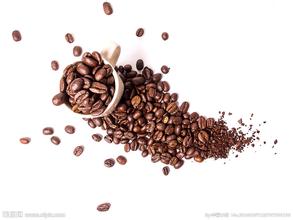How's the Salvadoran coffee? what's the coffee manor?
At present, the most important coffee beans in the world mainly come from Arabica, Robasta and Libya, the three original varieties of coffee trees, and the quality of the coffee beans produced by these three varieties is also higher than that produced by other coffee trees. The Arabica coffee tree, which originated in Ethiopia, accounts for 70% of the world's output of coffee beans; the world-famous Blue Mountain Coffee and Mocha Coffee are almost all Arabica species. Arabica coffee trees are suitable for growing in high mountains with large temperature difference between day and night, as well as soil with low humidity and good drainage; the ideal altitude is 500m ~ 2000 m, and the higher the altitude, the better the quality. However, due to the weak ability of resistance to diseases and insect pests, it is more difficult to grow than the other two kinds of coffee trees. Taste classification of coffee beans from the origin of Robasta Coffee Tree: sour mocha, Hawaiian sour coffee, Mexico, Guatemala, Costa Rica high real estate, Gillimanjaro, Colombia, Zimbabwe, El Salvador, Western Hemisphere washable high-grade new beans. Bitter Java, Mantenin, Bogota, Angola, Congo, Uganda all kinds of old beans. Sweet Colombian metenin, Venezuelan old beans, Blue Mountains, Gillemazaro, Mocha, Guatemala, Mexico, Kenya, Santos, Haiti. Neutral Brazil, El Salvador and lowland Costa Rica account for about 20% to 30% of the world's output in the Congo in Africa. Robasta coffee tree is suitable for growing in lowlands below 500 meters above sea level, has strong adaptability to the environment, can resist bad climate, resist diseases and insect pests, and does not need much manual care during soil preparation, weeding and pruning, and can be allowed to live in the wild.

Important Notice :
前街咖啡 FrontStreet Coffee has moved to new addredd:
FrontStreet Coffee Address: 315,Donghua East Road,GuangZhou
Tel:020 38364473
- Prev

Indonesia Mantenin coffee bean style coffee bean variety introduction how many kinds of coffee are there
The warehouse in the harbor. The processing process and Sumatran characteristics. I describe these treatments in such detail because it is not clear how the soil and atmosphere and the unusual treatment techniques and the three-stage drying each affect the formation of the characteristics of Lindong and Manning coffee. Only one thing is certain. These ancient desolation, the distant end of the yellow sand; some people
- Next

Introduction to the varieties of Guatemalan coffee beans Antigua coffee beans
However, the output is small, but the texture is better. The residents of Antigua prefer an one-time harvest because they grow coffee in a large area, and use the ancient sun method to remove the skin and flesh of the coffee fruit. People pluck the ripe fruit and the immature fruit together, and even mix the leaves with them and expose them to the sun. Spread on the ground for such a long time, coffee
Related
- Does Rose Summer choose Blue, Green or Red? Detailed explanation of Rose Summer Coffee plots and Classification in Panamanian Jade Manor
- What is the difference between the origin, producing area, processing plant, cooperative and manor of coffee beans?
- How fine does the espresso powder fit? how to grind the espresso?
- Sca coffee roasting degree color card coffee roasting degree 8 roasting color values what do you mean?
- The practice of lattes: how to make lattes at home
- Introduction to Indonesian Fine Coffee beans-- Java Coffee producing area of Indonesian Arabica Coffee
- How much will the flavor of light and medium roasted rose summer be expressed? What baking level is rose summer suitable for?
- Introduction to the characteristics of washing, sun-drying or wet-planing coffee commonly used in Mantenin, Indonesia
- Price characteristics of Arabica Coffee Bean Starbucks introduction to Manning Coffee Bean Taste producing area Variety Manor
- What is the authentic Yega flavor? What are the flavor characteristics of the really excellent Yejasuffi coffee beans?

